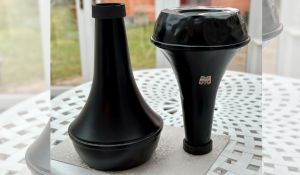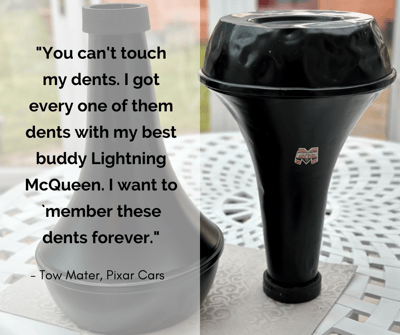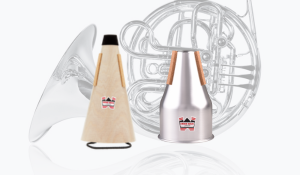Will your mute last 3 or 30 years? Avoid these 3 mute fails.

 We recently polled the Denis Wick artist group asking who had the oldest mute. What we received were a series mute pictures ranging from just a few years old to over 30 years old, and a variety of stories to go with them. Do you have a mute that has stood the test of time (let us know below!)?
We recently polled the Denis Wick artist group asking who had the oldest mute. What we received were a series mute pictures ranging from just a few years old to over 30 years old, and a variety of stories to go with them. Do you have a mute that has stood the test of time (let us know below!)?
It's probably a bit dented and worn looking, but the corks are shaped to perfection, and the dents it's inherited tell a story of all the concerts you've played, rehearsals you've survived, places you've traveled, etc. What allows a mute to stand the test of time?
There are 3 main areas that will eliminate a mute from your arsenal of accessories: faulty corks, loose seams, and material strength.
Get our newest tips, updates, videos, clinics, community events, and more by joining Denis Wick Tips Blog
Cork Fails: There are 3 main issues with mute corks that will shorten the life of your mute.
1. Crumbly Cork. While some manufacturers praise the "extra grip" of their synthetic blend cork, synthetic cork will deteriorate fairly quickly and does not adapt to weather and environment as well as natural cork. Denis Wick Products uses all natural cork sourced from Portugal, because all natural cork can stand up to a multitude of environments, repeated compression in the bell, and not crumble or deteriorate.
2. Missing Cork. It's not just the glue that keeps your cork from falling off after a few months. Many manufacturers try gluing the flat surface of their cork to the convex surface of their mute. As a result, the cork will continually try to pull away from the mute and the glue is now required to keep the cork in place and shape. Denis Wick specially cuts each cork with a concave base so that it is actually fitted to the mute and will not pull away. This way the high quality epoxy needs only to keep the cork in place.
"If I can age half as well as a Denis Wick Mute, I'll be doing quite well in this life!"
- Buddy Deshler, Denis Wick Artist
Loose Seams. Most aluminium mutes are manufactured in 2 halves: the top cone and the base. Where these two halves are joined is the seam of the mute. Frequently, as a mute ages, these two halves can loosen and you will find that the top and bottom half start to rotate or rattle. Each Denis Wick mute is hand made and the seams are hand tightened to ensure a tight fit that will last the test of time and travel.
Material Strength. Have you had a mute where the metal has seemed to thin over time? Or the material was never very sturdy to begin with? Especially where aluminium mutes are concerned, a lesser quality metal can wear out faster and inspire a host of issues, such as loose seams and air leaks. Also, the integrity of the shape of the mute makes a huge difference in how the mute will perform so a mute must be able to handle mute bag travel, beginner band, the effects of gravity, etc. Denis Wick aluminum mutes are all hand-drawn using high quality aluminium. As the metal is drawn, it actually hardens which improves the durability of our mute in addition to creating the amazing resonance musicians have grown to depend on from Denis Wick.

Is your mute older than ours? Visit our Denis Wick Artist Group Oldest Mute Gallery to view our collection and submit an image of your own mute, or story of your favorite dent, to be added to our gallery.

Find all our Denis Wick resources in one spot on the Denis Wick app. Download to view videos, clinics, educator resources, podcasts, product information & more!



